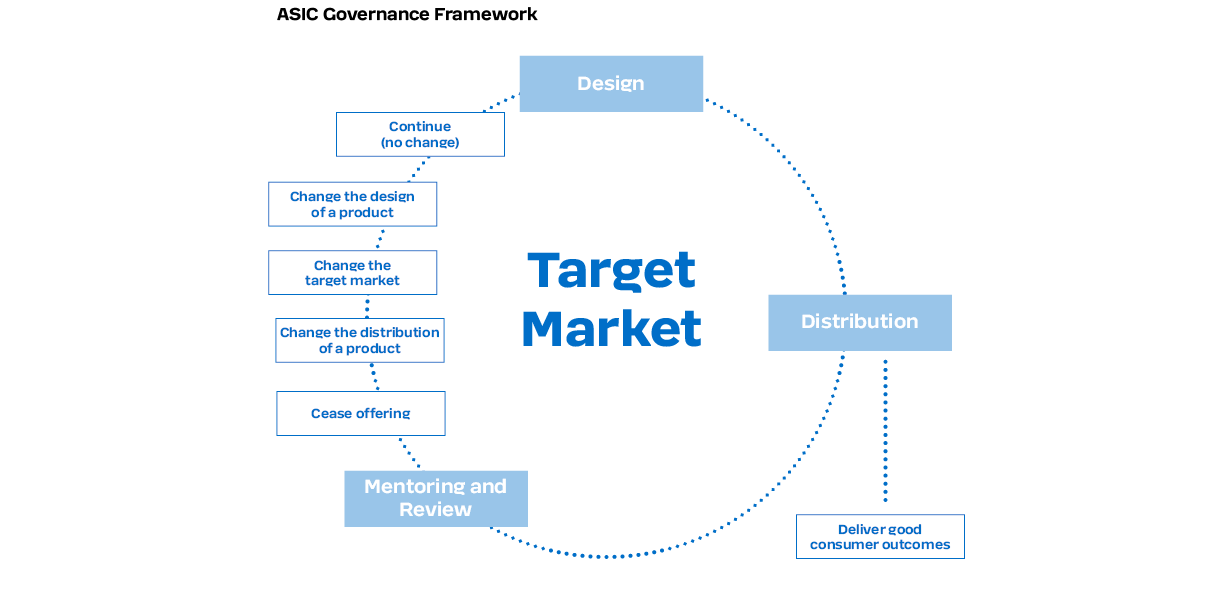Insurance product update:
Am I meeting the needs of my target market?


Putting people first is more important than ever, as insurers face intense scrutiny under obligations coming into effect early next year. Taylor Fry’s Kevin Gomes and Scott Duncan team up with Mark Lindfield, of Lander & Rogers, to help prepare you for the changes
A focus on the customer is at the centre of new laws governing the design and distribution of insurance products, reflecting a broader culture shift throughout the industry, following last year’s financial services royal commission.
With little more than 12 months before the new laws come into effect and with the Australian Securities and Investments Commission (ASIC) seeking input as to how it should administer them, it’s timely for insurers and distributors to familiarise themselves with their new obligations.
We explain what’s required, what ASIC expects and what you should look out for …
Where did the new laws originate?
For the past 15 years, the preferred approach of regulators and legislators has been to attempt to improve consumers’ financial literacy through guides, product disclosure statements, statements of advice and fact sheets. More recently, and due particularly to Commissioner Kenneth Hayne’s findings, there has been an appreciation for boards and senior management to do more.
While consumers should remain responsible for their decisions to acquire financial products, issuers and their distributors are now being called on to focus squarely on customer needs when designing products, and to continually review whether the products are designed and distributed in a way that’s likely to meet the needs of their target market.
This idea of taking a more client-centric approach is not new. Back in 2014, a report by the independent Financial System Inquiry recommended a targeted and principles-based product design and distribution obligation. This would require issuers and distributors to consider not only commercial considerations when designing products, but also the type of consumer whose financial needs would be addressed by buying the product and the channel best suited to distributing the product.[1] That recommendation now comes into effect with the new laws.
Who is affected and when?
From 5 April 2021, the new laws will apply to, among others:
- Insurers who are required to prepare a product disclosure statement (PDS) under Part 7.9 of the Corporations Act 2001 (general insurance sold to retail clients, for example)
- Issuers of products for which a PDS is not required but where the product falls under the consumer protection provisions of the ASIC Act 2001 (credit contracts, for example)

What is required?
The laws require the insurer (as preparer of the PDS) or other product issuer to make a written target-market determination (TMD) for a financial product before any retail distribution occurs. The key content requirements for the TMD are:
- A description of the class of retail clients that comprises the product’s target market
- Any conditions or restrictions on distribution of the product that will ensure the reasonable likelihood a consumer acquiring it will be in the target market
- The circumstances that would reasonably suggest the TMD is no longer appropriate and the information the issuer would need to identify those circumstances (such as falling loss ratios and rising complaints)
- A reasonable TMD review period
- A reasonable complaints period where these must be reported to the product issuer by distributors
A special note on TMDs
It won’t be an offence to distribute a product to a consumer outside the target market. However, a product issuer has an ongoing obligation to take reasonable steps to ensure that retail distribution of its product is consistent with the TMD, having regard to the likelihood of mis-selling and the nature and degree of harm that might result from sales to retail clients not in the target market.
Record-keeping obligations also apply, so expect scrutiny from ASIC or the Australian Financial Complaints Authority in the event of a dispute.
Product issuers will be required to notify ASIC within 10 business days of any ‘significant dealing’ inconsistent with a product’s TMD.
What does ASIC expect?
At the end of 2019, ASIC released a consultation paper and draft regulatory guide, setting out how it proposes to administer the new laws and what its expectations are for product issuers. Consultation on ASIC’s guidance ends on 11 March 2020.
In the draft, ASIC describes the new laws as introducing a ‘product governance framework’, encompassing not only product design and distribution but also monitoring and post-sales review. ASIC doesn’t intend to produce a template TMD or framework for product issuers, since each will be affected by the nature, scale and complexity of an issuer’s or distributor’s business. However, it considers TMDs need to be sufficiently specific as to exclude consumers whose financial needs the product is not likely to meet.

This diagram, taken from its consultation paper, illustrates ASIC’s product governance framework
ASIC expects all levels of the business, including senior management, will embrace the product governance framework, will understand it and will implement it daily. The commission emphasises the need for insurers and other issuers to consider their products’ ‘choice architecture’ – the features in an environment that influence consumer decisions. In particular, consumer vulnerabilities should be front of mind.
In this way, the consumer target market remains the central focus of product design and distribution.
What to look out for
Here are five important features of the new laws and of ASIC’s guidance to carefully consider:
- The new laws will apply to the ongoing distribution of existing products, not merely new products developed after April 2021, which means that all retail client renewals due after that date will need to be considered against a TMD. ASIC expects insurers to analyse the data they hold to reduce the likelihood of offering renewals to consumers who are no longer in the target market (for example, renewal of a comprehensive motor policy on a vehicle that has become old).
- Although the law does not require it, ASIC considers it useful for issuers to consider which consumers are not suited to their products (the ‘negative target market’) and to specify the negative target market in the TMD.
- Bundled products, such as home building and contents insurance, will require separate TMDs and this would seem to include unrelated products such as home and motor insurance that are packaged at a discount as part of a promotion.
- TMDs must be publicly available and this also means that advertisements must inform consumers where the TMD can be obtained.
- Designing appropriate ‘choice architecture’ extends to website design, which can be expected to come under greater scrutiny from ASIC.
What to do now
Although the design and distribution obligations (DDO) come into effect in 2021, insurers should start identifying any potential issues with their retail business in meeting ASIC expectations. This may include:
- Assessing the value offered under each current or proposed product from a customer perspective
- How they intend to determine the target market for each product and whether adequate information is being collected to allow a target market (and consequently those customers who may sit outside the target market) to be appropriately determined
- Analysis of enquiries, disputes and/or other customer satisfaction data, which may provide some evidence of customers being sold unsuitable products
- Appropriateness of distribution arrangements for each product, noting that distributors will also be required to take reasonable steps to ensure that distribution is in accordance with the TMD when the new laws come into effect
- Having a robust product monitoring capability, which will be a key component of the product governance framework.
[1] Financial System Inquiry – Final Report, The Treasury, November 2014, p.198.
Other articles by
Kevin Gomes
Other articles by Kevin Gomes
More articles

RADAR 2020
Welcome to RADAR 2020, Taylor Fry’s inside look at the general insurance industry, the state of the market and what it means for insurers
Read Article
RADAR 2019
Welcome to RADAR 2019, Taylor Fry’s inside look at the general insurance industry, the state of the market and what it means for insurers
Read Article
Related articles
Related articles
More articles

Cyber update – protection gap widens for SMEs
Win-Li Toh and Sarah Wood look at why SMEs risk being left behind and offer recommendations in a new Actuaries Institute dialogue paper.
Read Article

RADAR FY2024 – Strongest result in more than 10 years, but insurers in regulator sights
RADAR FY2024, Taylor Fry’s annual insurance rundown in a year of solid results alongside a focus on integrity, customers and climate.
Read Article







